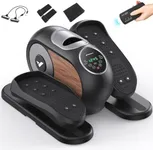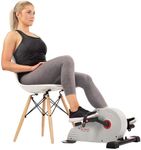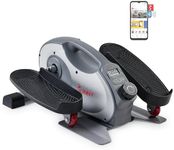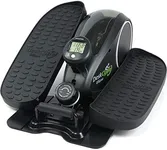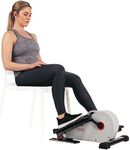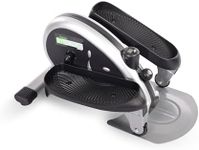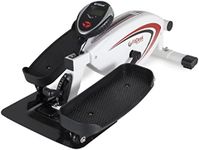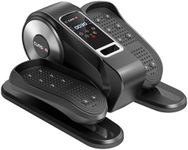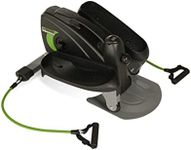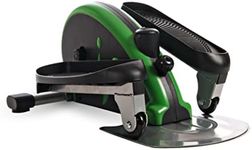Buying Guide for the Best Under Desk Ellipticals
Choosing an under-desk elliptical can be a great way to stay active while working or sitting for long periods. The right model for you will depend on your space, comfort, and how you plan to use it. It's important to consider how much room you have under your desk, how quiet you need the machine to be, and what kind of workout intensity you want. By understanding the key features, you can find an under-desk elliptical that fits seamlessly into your daily routine and helps you reach your fitness goals.Size and DimensionsSize and dimensions refer to how much space the elliptical takes up, especially in terms of height, width, and length. This is important because you need to make sure the machine fits comfortably under your desk and allows enough room for your knees to move without hitting the desk. Smaller models are better for tight spaces or lower desks, while larger ones may offer a more natural stride but require more clearance. Measure the space under your desk and your leg movement to choose a size that fits your setup.
Pedal HeightPedal height is the distance from the floor to the top of the pedal at its highest point. This matters because a higher pedal can cause your knees to bump into the underside of your desk, making it uncomfortable or even unusable. Lower pedal heights are best for desks with limited clearance, while higher pedals may be fine if you have a taller desk. Consider your desk height and your own leg length to pick a pedal height that allows smooth, unobstructed movement.
Resistance LevelsResistance levels determine how hard it is to pedal the elliptical. This is important because it affects the intensity of your workout and how much you can challenge yourself. Some machines have only a few resistance settings, while others offer a wide range. Lower resistance is good for gentle movement or rehabilitation, while higher resistance is better for building strength and burning more calories. Think about your fitness goals and whether you want a light activity or a more challenging workout to choose the right resistance range.
Noise LevelNoise level refers to how much sound the elliptical makes when in use. This is especially important if you plan to use it in a shared office or quiet environment. Quieter machines are less likely to disturb others or distract you during work or calls. Look for models that mention smooth or silent operation if noise is a concern, and consider reading user reviews to get a sense of real-world noise levels.
Display and Tracking FeaturesDisplay and tracking features include things like screens that show your speed, distance, calories burned, and time. These features are important if you want to monitor your progress and stay motivated. Some models have simple displays, while others can connect to apps or offer more detailed tracking. If you like to keep track of your activity or set goals, look for a model with the tracking features that matter most to you.
Portability and WeightPortability and weight refer to how easy it is to move the elliptical around. This matters if you plan to use it in different locations or need to store it away when not in use. Lighter models with built-in handles are easier to carry, while heavier ones may be more stable but harder to move. Think about whether you'll need to move the machine often and choose a weight and design that matches your needs.
Build Quality and StabilityBuild quality and stability describe how sturdy and well-made the elliptical is. This is important for safety and comfort, as a wobbly or flimsy machine can be distracting or even dangerous. Heavier, well-built models tend to feel more stable, especially during more intense use. If you plan to use the elliptical frequently or at higher resistance, look for a model with solid construction and good reviews for stability.
